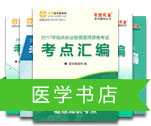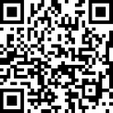| ADMINISTERING ORAL MEDICATIONS | 口服给药 |
| Assessment | 评估 |
| 1. Identify the drug(s) ordered: action, purpose, normal dosage and route, common side effects, time of onset and peak action, and nursing implications. | 确认药物:作用、目的、正常剂量及给药途径、常见副作用、起效时间和药峰时间和护理 |
| 2. Assess for any contraindications to oral medication. | 评估口服药物禁忌 |
| 3. Check allergies and replace any missing or faded identification bracelets. | 核对过敏资料,补充遗失或替换模糊的识别腕带。 |
| 4. Assess client's knowledge regarding medications. | 评估病人的药物知识。 |
| 5. Assess client's preferences for fluids. Maintain fluid restrictions as prescribed. | 评估病人液体喜好。按处方维持液体限制。 |
| Implementation | 实施 |
| 1. Use Standard Protocol. | 使用标准仪式。 |
| Preparing medications | 准备药物 |
| 2. Compare medication administration record with scheduled medication list. If discrepancies exist, check against original physician orders. | 对照用药记录与药物单。如有差错,应核对原始医嘱。 |
| Nurse Alert: Review five rights. | 注意:执行“五对”制度。 |
| 3. Arrange cups in medication preparation area or move medication cart to position outside client's room. | 在药物准备区备好杯子,或将药车推到病人病房外。 |
| 4. Unlock medicine drawer or cart. | 开锁,打开药柜或药车。 |
| 5. Prepare medications for one client at a time. | 按病人依次准备药物。 |
| 6. Select correct drug from stock supply or unit dose drawer. Compare label of medication with MAR or computer printout. | 从备用药或单位剂量抽屉中选择所需药物。 |
| 7. Check drug dose. If label dose differs from ordered dose, calculate correct amount to give. | 核对药物剂量。如标签剂量不同于医嘱剂量,应算出正确剂量。 |
| 8. To prepare unit dose tablets or capsules, place packaged tablet or capsule directly into medicine cup without removing wrapper. | 准备单位剂量药片或胶囊时,直接将包装好的药片或胶囊放入药杯,无需除去包衣。 |
| 9. To prepare tablets or capsules from a floor stock bottle, pour required number into bottle cap and transfer medication to medication cup. Do not touch medication with fingers; return extra tablets or capsules to bottle. | 从原料瓶准备药片或胶囊时,将所需药物倒入瓶盖,现转到药杯,勿使手指触碰药品物。将剩余药片或胶囊倒回药瓶。 |
| 10. Check the expiration date of each drug. Return all outdated drugs to pharmacy. | 核对每种药物的有效期。将过期药品退还药房。 |
| 11. Place all tablets or capsules requiring preadministration assessments (e.g., pulse rate, blood pressure) in a separate cup. | 将需要进行药前评估的药品(如脉率、血压)单独放在一个杯中。 |
| 12. Medications that need to be broken in order to administer half the dose can be broken using a gloved hand or cut with a cutting device. | 需切半服用的药物可用带手套手掰开或用锐器切开。 |
| 13. When preparing liquids, thoroughly mix before administering. Check and discard medications that are cloudy or have changed color: | 液体药:用前需摇匀。检查并弃用混浊或变色药品。 |
| A. Place cap upside down while pouring. | 倾倒药液时将盖底朝上。 |
| B. Hold label against palm of hand while pouring. | 倒时就用手心贴住标签。 |
| C. Place medication cup at eye level and fill to desired level. | 持药杯与眼同高,倒药液至所需刻度处。 |
| D. Wipe lip of bottle with paper towel. | 用纸巾擦净瓶口。 |
| E. If client has difficulty swallowing, use a mortar and pestle to grind pills or a pill-crushing device. Mix ground tablet in small amount of soft food. | 如病人呑药有困难,可用药臼或碎药器研碎药片。用少量软食混合药末。 |
| 14. If giving less than 5 ml of liquids, prepare medication in a sterile syringe without a needle. | 如所给药液少于5毫升,可用无针头注射器准备药液。 |
| Nurse Alert: EC or SR tablets may be available in liquid or suppository form. Crushing alters absorption rate. | 注意:肠衣片或缓释制剂分液剂和栓剂,研碎后可改变吸收率。 |
| 15. Narcotic preparation. Check narcotic record for previous drug count and compare with supply available. | 麻醉药品。核对用药记录,检查以前用药数量及可用药品。 |
| 16. Sign out narcotics according to agency policy. | 根据医院规定登记麻醉药品使用情况。 |
| Administering medications | 发药 |
| 17. Take medications to client within 30 minutes before or after scheduled time. | 在预定给药时间30min内携药品至病人床前。 |
| 18. Identify client. | 确认病人。 |
| 19. Perform necessary preadministration assessment for specific medications. | 实施特定药品的用前评估。 |
| 20. Discuss the purpose of each medication and its action with client. Allow client to ask any questions about drugs. | 与病人讨论每种药品的用药目的及其作用。允许病人询问药品相关问题。 |
| 21. Assist client to sitting or side-lying position. | 协助病人取坐位或侧卧位。 |
| Nurse Alert: Check ability to swallow if appropriate. | 注意:检查呑药能力。 |
| 22. Administer drugs properly: | 正确给药: |
| A. Client may wish to hold solid medications in hand or cup before placing in mouth. | 病人可能会在药品放入口前将固体药品放在手里或杯中。 |
| B. If client is unable to hold medications, place medication cup to the lips and gently introduce each drug into the mouth, one at a time. Do not rush. | 如病人无法持药,可将药杯放在病人唇边,轻轻将药片喂进嘴里,一次一片。不要仓促行事。 |
| C. Offer water or juice to help client swallow medications. Give cold carbonated water if available and not contraindicated. | 用水或液体帮助病人呑药。如无禁忌,也可用碳酸水送服。 |
| Nurse Alert: Decide on sequence of administration. | 注意: |
| D. For sublingual-administered drugs, have client place medication under tongue and allow it to dissolve completely. Caution client against swallowing tablet. | 服舌下药时,应让病人将药放于舌头下待其完全溶化。提醒病人不能呑药。 |
| E. For buccal-administered drugs, have client place medication in mouth against mucous membranes of the cheek until it dissolves. | 颊部给药时,应让病人将放入口腔贴在面颊粘膜直至溶化。 |
| F. Mix powdered medications with liquids at bedside and give to client to drink. | 在床边用液体混合粉剂给病人服用。 |
| G. Caution client against chewing or swallowing lozenges. | 提醒病人不能咀嚼或呑咽锭剂。 |
| H. Give effervescent powders and tablets immediately after dissolving. | 泡腾粉剂和片剂应在溶解后立即服用。 |
| 23. Stay until client has completely swallowed each medication. If concerned about ability or willingness to swallow, ask client to open mouth and inspect for presence of medication. | 确认病人服下全部药品后方可离开。如担心病人呑咽能力或不愿意呑咽药品,应要求病人张嘴检查口腔内是否存有药品。 |
| 24. For certain medications that should not be given on an empty stomach, offer client nonfat snack. | 有些药物不能空腹服用,服用时应向病人提供非脂肪食物。 |
| 25. Replenish stock such as cups and straws, return cart to medicine room, and clean work area. | 补充用口,如药杯和吸管。推车返回药房,清洁工作区。 |
| 26. Use Completion Protocol. | 使用完成仪式。 |
| Evaluation | 评价 |
| 1. Return within appropriate time to determine client's response to medications. | 及时返回病房确定病人对药物的反应。 |
| 2. Evaluate client's learning needs. | 评价病人学习需要。 |
| Identify Unexpected Outcomes and Nursing Interventions | 确认意外结果和护理措施。 |
| Record and Report | 记录和报告 |
| 1. Actual time given and signature according to agency policy. | 按医院规定登记实际给药时间及签名。 |
| 2. Drugs withheld and reason. | 停用药物及理由。 |
| 3. Adverse effects/client response. | 不利效应及病人反应。 |










 扫一扫立即下载
扫一扫立即下载


